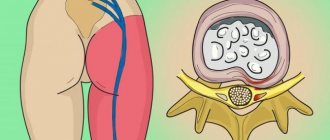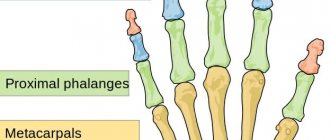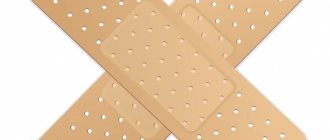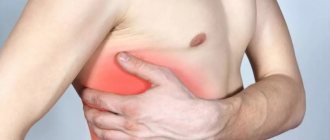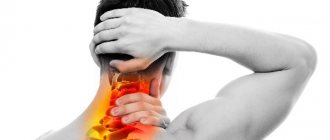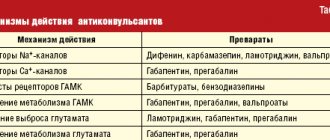Varieties
Sensitivity disorders are divided into two groups - increased or decreased.
Reduced ones include analgesia, hypoesthesia, and termanesthesia. With analgesia, a person does not feel pain; it can occur in many diseases and injuries of the nervous system. Hypoesthesia is manifested by a decrease in tactile sensitivity; the patient does not respond to skin punctures or insects crawling on the body. Thermaneesthesia is characterized by a violation of the perception of temperature conditions (warm and cold influences).
Increased sensitivity distinguishes terms such as hyperalgesia, hyperesthesia and hyperpathia. Hyperalgesia is a pathologically increased perception of pain; sharp or increased perception of stimuli is called hyperpathy. In this condition, the unpleasant sensations continue for quite a long time, the patient cannot determine the exact location and the sensations of irritation continue longer than contact with the irritant occurs. Hyperesthesia is an increased perception of stimuli, but at the same time the patient is able to sense the correct location of the stimulus and what type of impact.
Disorders in which the patient perceives a single effect as multiple are called polyesthesia. Allocheiria is a condition in which the patient feels irritation not at the site of its impact, but in the same areas on the opposite side of the body. With dysesthesia, there is a perverted perception of stimuli, that is, their confusion. When exposed to pain, the patient may feel warmth; when exposed to low temperatures, a tingling sensation. Paresthesia is a spontaneously occurring and short-term sensation of numbness, burning and a feeling of “crawling sensations”.
Mental hypoesthesia
Mental hypoesthesia is a weakening of sensitivity up to its loss, i.e. anesthesia. The definition of “mental” indicates that the disorder is not associated with neurological pathology, conductive or central, nor is it associated with damage to the receptors of the corresponding sensory organs. Let us add one more important note to what has been said. In this fragment of the text, it is impossible not to touch upon the topic of the pathology of self-perception, that is, the loss of the ability to recognize certain sensations. It is quite difficult to distinguish between where there is a violation of the very process of formation of sensations, and where sensations are fully formed, but are not realized.
Moreover, both types of violations may well be combined with one another, and it is difficult to formulate any specific judgments here. Nevertheless, we will indicate two signs that allow, although not always, to make an appropriate distinction. Firstly, disturbances of the sensations themselves can be identified by objective research methods. For example, with the loss of pain sensitivity, the application of painful stimuli is not accompanied by the appearance of a sensation of pain. The loss of awareness of the feeling of pain is different in that the sensation of pain, as it turns out, is preserved to one degree or another. Secondly, the disturbance of sensations is often not noticed by the patient and is detected only during a special examination.
| | Our clinic accurately diagnoses such conditions. |
Often this disorder does not bother patients. In the case of a disorder of self-awareness, the patient will most often notice the fact of the disorder himself, and perhaps draw the doctor’s attention to it. In addition, such a disorder is often accompanied by a more or less pronounced reaction of suffering. In the following clinical illustrations of hypoesthesia, testimonies of patients exhibiting symptoms of impaired self-perception especially often appear.
A decrease in the intensity of sensations can occur in different analyzers and manifest itself in each of the above modalities. In accordance with this, we will indicate the symptoms of the disorder.
Mental hypalgesia and analgesia - reduction and loss of pain sensitivity. The term indolence is used less frequently. Loss of pain sensitivity, including persistent ones, is especially often detected in an acute psychotic state with symptoms of confusion, catatonia, delusions and hallucinations. The fact that the pain sensations in catatonic patients are preserved is evidenced by the vivid reaction of the pupils to pain - when painful stimulation is applied, the patients’ pupils dilate.
This symptom in catatonic patients was first described by O. Bumke (1903). Such patients often commit acts of self-harm and suicide with extensive self-injury to various organs, including internal ones, without any awareness of pain. Thus, the patient, on the orders of the “voices,” cut both of his legs “like sticks” without feeling any pain. Pain sensitivity is restored as the mental state improves. Awareness of pain is also lost in patients with severe depression, in a state of passion, when consciousness is stunned, in a hypnotic trance, in intoxication, or during meditation. The mechanisms of analgesia in this case are most likely heterogeneous. Thus, the loss of the feeling of pain during deafening of consciousness is possibly associated with the shutdown of higher levels of personality, in particular self-awareness, as well as a dysfunction of the cortical structures of pain.
Confusion of consciousness inevitably entails confusion of self-awareness, as is clearly seen in oneiroid, and, consequently, leads to a disturbance in the perception of various manifestations of the Self, including analgesia. In depression, awareness of pain is likely to be more affected. Pain sensitivity sometimes decreases due to depersonalization. Patients feel their own pain as if it belongs to someone else or is perceived somewhere far away and thus seems to lose its severity. Loss of superficial pain sensation (“quick pain”) occurs in patients with progressive paralysis, most likely due to damage to nerve cells and pain pathways.
Hysterical analgesia is explained by a selective focus of attention or, in the terminology of psychoanalysis, with the repression of the feeling of pain. This happens because hysterics benefit from disruption in one way or another. In any case, most doctors, following P. Janet and Z. Freud, still share such accusations of patients. During sleep, pain sensitivity often decreases - hypnoanalgesia. This is probably due to “sleepy inhibition” of nerve cells. A phenomenon such as audio analgesia—a decrease in pain sensitivity under the influence of loud sounds—has also been described. Audioanalgesia appears to be a consequence of reciprocal intermodal sensations. With tabes dorsalis, Abadi's symptom occurs - the absence of a pain response in response to compression of the heel tendon. Similar assumptions can be made for the following types of loss of sensitivity.
Mental anakusia and hypoacusia are loss (weakening) of the sensation of sound. Dulling of the acuity of perception of acoustic stimuli. It is especially common in depression. The sounds seem to patients to be weakened, indistinct, poorly modulated, coming as if from afar: “My ears feel stuffy, like there’s cotton in them, I don’t seem to hear enough, I can’t understand what they’re saying to me, sometimes I ask again.” With hysteria, functional deafness occurs, usually combined with loss of the ability to speak - surdomutism.
Mental anopsia and hypoopsia are loss (weakening) of photosensitivity. Depressed patients often report that bright lighting seems dim, dull, evening to them, everything is perceived as in a haze, through a veil, a veil, a curtain, as through a window on a rainy day, or as if the eyes were curtained, covered with a film. The contours of objects are not clearly perceived, they are seen as unclear, blurry, lacking clear outlines, fluctuating in the wrong light. At the same time, color perception also suffers. Colors seem faded, faded, pastel, shades of different colors are difficult to distinguish. With hysteria, functional amblyopia is observed - motivated blindness. The symptom of looking into the eyes is also characteristic: the patient looks directly into the eyes of the interlocutor, even if he changes his location.
Mental ageusia and hypogeusia are loss (dulling) of taste sensations. Described mainly in depression. Food seems tasteless, bland, and monotonous to patients: “It’s like you’re chewing grass or rubber. No matter what you eat, everything seems equally tasteless. If you don’t look at what’s on the table, it seems like you won’t be able to discern what kind of food it is... I don’t feel a sweet taste, the food seems bitter.” Ageusia can be partial, affecting only some submodal taste sensations. Objectively, taste sensitivity may not be impaired.
Mental anosmia and hyponosmia - loss (dulling) of olfactory sensations: “I don’t understand whether it smells like something or not... I can’t distinguish odors, like with a runny nose, it’s as if they’re not there at all... I don’t smell perfume... Food doesn’t seem to smell or smells somehow differently". Detailed questioning may reveal different shades of what patients describe as loss of smell. An objective test often does not reveal a violation of the sense of smell.
Mental anathia and hyponaphy - loss (dulling) of tactile sensations:
“The skin on my cheek is numb, my cheek feels like it’s made of wood, I touch it, but she feels almost nothing... The skin under the kneecaps seems to be frostbitten. I touch it, press it, but I don’t feel it... I don’t feel anything with my lips, it’s as if they’re not mine, as if they were glued... I wash myself in the morning, but I don’t feel the water with my hands, as if I’m rubbing with dry palms.” Areas of loss of sensitivity have different localization and configuration that do not coincide with the anatomical zones of innervation. In the Middle Ages in Europe, areas of skin anesthesia were considered “marks of the devil,” and such patients usually faced torture and the stake. If we consider such a disorder to be hysterical, then it is difficult to imagine what the “secondary benefit” could be here, supposedly characteristic of patients. In hysterical surdomutism, we add, tactile hypoesthesia of the skin of the ears and ear canals is simultaneously detected.
Mental apallesthesia and hypopallesthesia are loss (weakening) of vibration sensations. This is apparently indicated by the following reports from patients: “Everything inside froze, stopped... I don’t feel my heart beating, there seems to be no pulse... It’s like there’s nothing inside, there’s emptiness.”
Mental abathesthesia and hypobathesthesia - loss (weakening) of kinesthetic sensations: “My legs are like cotton wool, I don’t feel them well... My arms are numb, as if they were numb, as if I had been resting them... The movements are light, imperceptible, as if the joints are lubricated... I do everything with some incredible ease, effortlessly, my arms dangle as if on hinges.” Sometimes the perception of the position of body parts is disrupted: “I close my eyes and can’t understand how my arms lie, whether my legs are bent or extended, whether my fists are clenched or not... I don’t feel which way I turned my head, whether I’m sitting or lying.”
Mental abaresthesia and hypobaresthesia - loss (weakening) of sensations of pressure and weight: “I don’t feel the weight of the load... It seems to me that I can’t close my eyes and determine whether the bucket is full or empty... I can’t figure out whether I can handle this load or not... I seem to myself weightless... I seem to be so light, I’ll jump now and fly... My body seems to be as light as feathers. I’m afraid someone will sneeze or the wind will blow and I’ll be carried away... I squeeze my leg or arm, but I don’t feel it... They squeeze my arm with a tourniquet, but I don’t feel the pressure.”
Mental astatesthesia and hypostatesthesia - loss (weakening) of the static feeling: “The car accelerates, and I feel the acceleration only with my back... The plane falls into a hole, I only feel weightlessness, but there is no sensation of falling... It happened that you spin, stop and everything turns in the other direction. But now there is no such thing.”
Mental athermesthesia and hypothermesthesia - loss (weakening) of temperature sensitivity: “I can’t feel whether it’s hot or cold... I burned my hand and didn’t even feel it... I can’t feel with my hands whether the ice is cold... I don’t wear mittens or gloves, my hands don’t freeze... In winter, It’s frosty, I walk around without a hat and I don’t feel cold... I don’t feel the temperature. The thermometer says it’s about 40, but I don’t feel it at all.”
Back to contents
Prognosis of post-traumatic neuropathy
Important! It is impossible to classify the extent and prognosis of sensory nerve injury based on clinical findings early after injury. Thus, in order to assess the actual outcome of nerve damage, it is necessary to re-interview, examine and test the patient after 2 to 3 weeks of drug treatment.
Prognosis for recovery after injury to the inferior alveolar nerve during implantation:
Full recovery – 50%
Partial recovery – 44%
No signs of recovery – 6%
Diagnostic techniques
If hypoesthesia occurs frequently and lasts more than 2–3 minutes, you should immediately contact a neurologist for examination. It includes the following procedures:
- initial examination, identification of complaints, symptoms, clarification of the patient’s lifestyle and adherence to his bad habits;
- a general blood test to detect iron deficiency or pernicious anemia;
- a blood test for cholesterol and lipoprotein, which makes it possible to identify a tendency to form atherosclerotic plaques;
- computed tomography (CT) and x-ray - these studies will help determine the presence of bone fractures that have caused damage to nerve fibers, and will also help diagnose osteochondrosis, arthritis and other pathologies;
- electroneuromyography, which will make it possible to find the place where the nerve is damaged;
- Doppler ultrasound examination, which makes it possible to detect vascular pathologies such as varicose veins, atherosclerosis, thrombosis and others.
What causes numbness in the fingertips?
Paresthesia of the fingertips is usually bilateral. The most common cause of numbness in the fingertips is polyneuropathy. This is a simultaneous lesion of many peripheral nerves. The most vulnerable are the distal (that is, the most distant) areas. This explains the numbness of only the fingertips. In advanced stages, paresthesia spreads to the entire hand and above.
Causes of numbness in fingers and toes:
- diabetes;
- chronic renal and liver failure;
- systemic connective tissue diseases;
- toxic damage (alcohol, medication, infectious).
Diabetic neuropathy is clinically manifested in 50% of patients with diabetes. In the early stages, the myelin sheath is affected, after which the nerve fiber itself is destroyed. In addition to numbness, the patient is bothered by burning pain in the fingers, tingling, and chilliness.
Polyneuropathy in chronic renal and liver failure is characterized by the development of sensory and motor disorders.
Neuropathy develops while taking various medications:
- amiodarone;
- isoniazid;
- gold preparations;
- procainamide;
- drugs used for chemotherapy for cancer.
Drug-induced numbness subsides after appropriate therapy is stopped. The symptom worsens when treatment is resumed.
Paresthesia in the distal extremities may occur due to arsenic poisoning. The patient is bothered by severe pain in the fingertips. An objective examination reveals hypoesthesia or anesthesia.
Lead polyneuropathy develops over several weeks after exposure to a toxic substance. Numbness is preceded by intoxication syndrome, sleep disturbance, memory impairment, and irritability. Along with paresthesia, movement disorders develop.
Among infectious diseases, damage to peripheral nerves is most clearly represented in diphtheria. Polyneuropathy is caused by the action of a bacterial toxin and an autoimmune syndrome. Pathology develops 4-7 weeks after infection. Numbness from the fingers of the upper and lower extremities quickly spreads proximally with the development of deep paresis.
Treatment
Treatment for hypoesthesia depends on the person's underlying condition causing the numbness. Some conditions may be more difficult to diagnose and treat.
Here are possible treatments for some conditions:
- Narcotic drugs. Your doctor may lower your dose or prescribe a different medicine.
- Vitamin deficiency. Your doctor will likely suggest you change your diet and add supplements.
- Diabetes. Try to take steps to better control your blood sugar and take care of your lower extremities by wearing comfortable shoes. Your doctor may prescribe physical therapy to help you improve your balance and gait.
- Carpal tunnel syndrome. Your doctor may prescribe stretching, other exercises, and a special splint. In some cases, surgery can relieve symptoms.
- Some nerve injuries. Steroids are effectively used for injuries to the facial, optic and spinal cord.
Important! In other cases, the effects of hypoesthesia can be reduced with exercise or physical therapy.
Mental changes. Nervous exhaustion. Asthenia. Depression. Psychosis
Depression and asthenia are frequent companions and a supporting factor in many chronic diseases. They are caused not just by a decrease in mood, but also by a biochemical imbalance of the central nervous system, incl. disorganization of the serotonin systems of the brain. A kind of vicious circle “illness-depression-illness” is formed. In most cases, a good treatment result is based on working with this vicious circle, i.e. on the treatment of the underlying disease and restoration of regulatory processes in the nervous system, incl. and serotonin regulation.
Under the influence of antidepressant treatment, immunity indicators and blood biochemistry, blood pressure, ECG, EEG change for the better, and sleep improves. The restoration of lost movement functions occurs faster, and spasticity also decreases.
Reasons for mental changes
There are several main reasons for depression in diseases of the nervous system:
- Immune and infectious aggression against the nervous system;
- Prolonged stress caused by illness;
- Long-term unpleasant symptoms (pain, weakness, etc.);
- Unpleasant medical procedures;
- Cerebrovascular accident;
- Forced change in lifestyle;
- Side effects of certain medications (for example, interferons).
Symptoms of mental changes
Personality change. The development of personality changes can be found in almost any brain disease. It is characterized by a sharpening (strengthening) of some personal characteristics to the detriment of others or the appearance of pathological personality traits. Thus, pathological aggressiveness, greed, suspicion, negativism and depression, euphoria, a pathological tendency to flat jokes, hypo- or hypersexuality, neglect of hygiene, excessive religiosity, etc. may appear. The ability to adequately assess one’s own actions decreases, hence conflicts with other people and troubles with the law. With a long course of the disorder, especially in the absence of treatment, a decrease in intelligence is possible.
Psychosis. In the long-term period of traumatic, infectious and intoxication diseases that cause the death of brain cells, periodic organic psychoses may develop. Often psychoses occur at regular intervals (sometimes they have a clear seasonality).
Possible symptoms:
- Twilight stupefaction with excitement;
- Hallucinations;
- Rave;
- Insomnia;
- Autonomic disorders (changes in blood pressure, body temperature, menstrual cycle, etc.).
Treatment of personality disorders
We recommend seeking help if you experience symptoms of a personality disorder. In our clinic, treatment is carried out in several directions at once:
- Preventing the death of brain matter. In addition to treating the underlying disease, nootropic drugs, antioxidants, and polypeptide drugs are used.
- Relief of depression and agitation, sleep disorders. Here, mainly nootropics with a calming effect, antidepressants and antipsychotics are used, in the correct combination that preserves normal vital functions.
- Working with a psychotherapist to understand and correct social and personal problems.
Symptoms and signs of the disease
Hypoesthesia can be recognized by the following signs:
- high frequency of disease attacks;
- insensitivity to temperature changes;
- numbness in the head, neck, back, as well as paralysis;
- weakness and speech disorders;
- loss of smell;
- short-term loss of consciousness, difficulty breathing;
- dizziness and gait disturbance;
- burning, itching, tingling sensation and rash;
- numbness of the limbs while walking;
- pain in the lumbar region, muscle spasms;
- with facial hypoesthesia, vision and hearing may deteriorate, and the temperature may rise;
- Involuntary bowel movements or emptying of the bladder may occur.
Causes
Hypesthesia often appears in people who lead a sedentary lifestyle or perform monotonous, repetitive work. This pathology also accompanies diabetes mellitus, which affects the body's metabolic processes.
A common cause of the disease is insufficient concentration of B vitamins in the human blood. Such hypoesthesia is accompanied by increased irritability of the patient, frequent dizziness, fainting and improper functioning of the digestive system.
Loss of sensation in the scalp can occur due to improper functioning of the cardiovascular and nervous systems.
Another reason for the appearance of numbness is the so-called tunnel syndrome, which is compression of the nerve endings that pass through narrow places in the human body.
In addition, migraines, head injuries, coronary heart disease, alcoholism, and heredity can be factors that provoke the appearance of numbness.
In addition to the reasons listed above, hypoesthesia can be caused by rheumatoid arthritis. The nerve is pinched by the deformed joint, causing the well-known numbness.
These symptoms require immediate diagnosis in a medical facility and the prescription of drug therapy.
Surgical treatment of obliterating diseases of the lower extremities
Surgical treatment is prescribed to patients who can safely undergo major vascular intervention and whose severe symptoms do not respond to atraumatic treatment methods.
The goal is to reduce symptoms, cure the ulcer, and prevent amputation. Since many patients suffer from concomitant coronary artery disease, in light of the danger of acute coronary syndrome, they fall into the high-risk category of surgical treatment, therefore, the functional state of the patient’s heart is usually assessed before surgery. Thromboendarterectomy (surgical removal of an obstructing object) is performed for short, limited lesions in the aorta, iliac, common femoral, or deep femoral arteries.
Revascularization (eg, femoropopliteal anastomosis) using synthetic or natural (often saphenous vein or other vein) materials is used to bypass occluded segments. Revascularization helps prevent limb amputation and reduces lameness.
- Causes of hypoesthesia
- Symptoms of obliterating diseases of the lower extremities
- Mental changes. Nervous exhaustion. Asthenia. Depression. Psychosis
- Causes
- Types of hypoesthesia
- Numbness and decreased sensitivity
- What causes numbness in the fingertips?
- Prevention
- 3 Carpal tunnel syndrome
- How to prevent the problem
- 5. Psychotherapy
- Causes of hyperacusis
- Symptoms of mental hyperesthesia
- Etiology and pathogenesis
- Causes of development and treatment of hypoesthesia
In patients unable to undergo major surgery, sympathectomy may be effective when distal occlusion causes severe ischemic pain. Chemical sympathetic blockade is similar in effectiveness to surgical sympathectomy, so the latter is rarely performed.
Amputation is a last resort prescribed for intractable infection, intractable pain at rest and progressive gangrene. The amputation should be as distal as possible, sparing the knee for optimal use of the prosthesis.
Hypesthesia of the hands (fingers and hands)
Hand hypoesthesia is a common symptom of the development of tunnel syndromes. If the carpal valve or carpal tunnel is damaged, hypoesthesia of the fingers occurs, and if the ulnar nerve is damaged, the entire hand on the affected side may become numb.
In addition to tunnel syndromes, hand hypoesthesia accompanies brachial plexitis or plexopathy. When any of the three branches extending from the brachial nerve plexus is compressed, sensory disturbances in the hand and forearm may occur. Then the loss of sensitivity spreads to the shoulder.
With hypoesthesia of the hands, it is important to begin differential diagnosis with a comprehensive examination of the condition of the cervical spine. There may be two pathological factors that have a negative impact on the process of innervation of the upper extremities:
- with osteochondrosis complicated by protrusion and disc herniation, pressure is exerted on the radicular nerve responsible for the innervation of the arm;
- With posterior vertebral artery syndrome, the blood supply to the brain structures responsible for conducting sensory impulses from the upper extremities is disrupted.
Therefore, it is necessary to conduct a comprehensive diagnosis. Depending on the identified pathology, an individual course of therapy is prescribed.
Features of manifestations of iatrogenic damage to the trigeminal nerve
- Painful discomfort, changes in sensations, numbness (anesthesia).
- Functional consequences - Patients who experience pain from touch or cold often have difficulty with daily functions: kissing, communicating, speaking, eating and drinking, etc. https://www.ncbi.nlm.nih.gov/pubmed/22677874
- Psychological consequences - patients develop various anxiety, fear, anger, post-traumatic stress disorder. Psychological disorders can be aggravated in cases where informed consent for implantation, endodontic treatment, orthognathic surgery, etc., which specifically indicates possible nerve damage, has not been signed before medical intervention.
Rice. 6. Schematic representation of the relationship of the branches of the inferior alveolar nerve with the formed implant bed. Pain during drilling is an important diagnostic criterion for the proximity of the nerve.
Hypoesthesia of the leg (hips, legs, feet)
In most cases, hypoesthesia of the leg occurs against the background of the development of lumbosacral osteochondrosis and its complications. Bilateral hip hypoesthesia is the first clinical sign of cauda equina compression. This may be a symptom of a coccyx injury or arthrosis of the sacrococcygeal joint. Unilateral damage is typical for compression of the radicular nerve in the L5-S1 space. With tunnel syndromes, hypoesthesia of the feet, sagging of the arches and the development of transverse, longitudinal or mixed flat feet may appear.
When hypoesthesia of the lower leg appears, it is important to exclude vascular pathologies, such as:
- varicose veins of the lower extremities with severe swelling of the lower third of the leg;
- atherosclerosis (the formation of cholesterol plaques primarily occurs in the large blood vessels of the lower limb);
- obliterating endarteritis (more often formed in men aged 30 to 45 years who smoke);
- diabetic angiopathy.
When the first signs of hypoesthesia of the lower extremities appear, you should consult a neurologist. This doctor will be able to determine the exact cause of the sensitivity disorder during the initial examination.
Disease prevention
In order to prevent further development of the disease, it is necessary to start leading a healthy lifestyle:
- rejection of bad habits;
- healthy, full sleep;
- a balanced diet including vegetables and fruits;
- light exercises to ensure limb mobility;
- walks in the open air;
- alternation of work and rest;
- timely treatment of chronic diseases that can cause hypoesthesia.
So, we found out that hypoesthesia is a rather serious disorder of the body , which cannot be left to chance, expecting that it will go away on its own.
Because sometimes this disease can lead to the most tragic consequences.
Therefore, if you often feel signs of numbness in any part of the body, you should consult with an experienced doctor, and, if possible, get rid of bad habits that contribute to the development of hypoesthesia.




